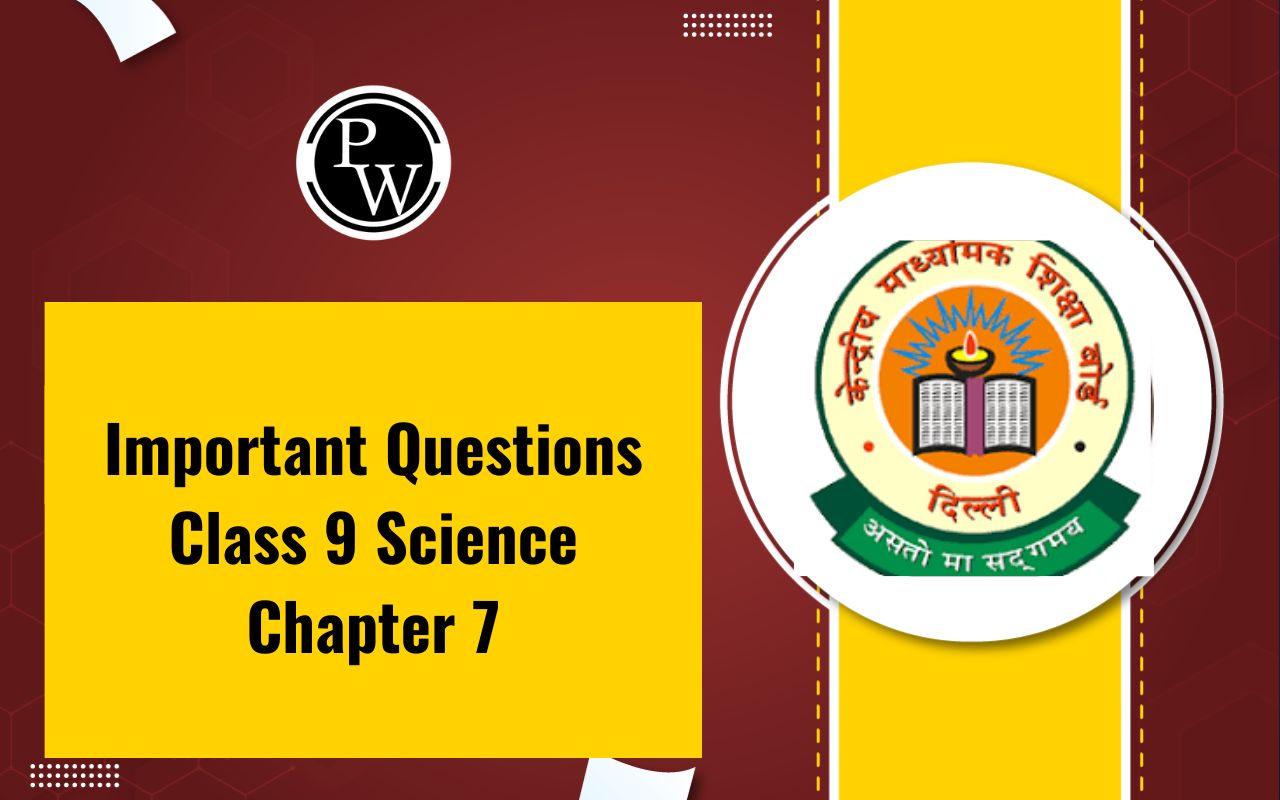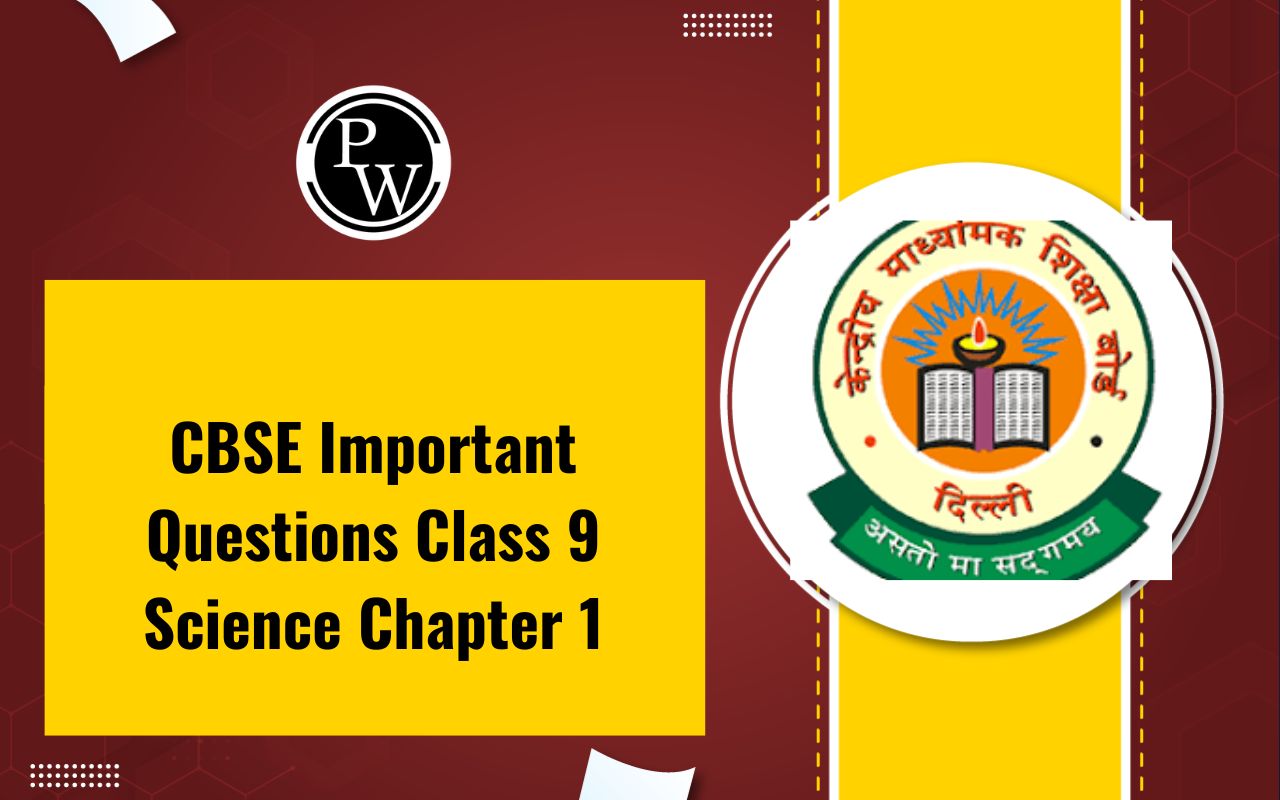
ICSE Class 9 Maths Selina Solutions Chapter 20: Here are the Selina Solutions for Maths Class 9 Chapter 20 Area and Perimeter of Plane Figures. Understanding the ideas covered in Class 9 is essential since they serve as the foundation for Class 10 topics.
To achieve remarkable results in the Class 9 Mathematics examination, it is recommended that you complete the exercises in every chapter of the book published by Selina to answer the questions. These Selina maths solutions for class 9 aid pupils in effectively grasping all of the material.ICSE Class 9 Maths Selina Solutions Chapter 20 Area and Perimeter of Plane Figures Overview
ICSE Class 9 Maths Selina Solutions Chapter 20: Area and Perimeter of Plane Figures focuses on teaching students how to calculate the area and perimeter of various two-dimensional shapes, including rectangles, squares, circles, triangles, and polygons. The chapter provides formulas and methods for finding these measurements, which are fundamental in geometry.
By working through this chapter, students learn to apply these concepts to solve problems, develop problem-solving skills, and prepare for more advanced mathematical topics. Understanding these basic principles helps in everyday situations and builds a solid foundation for future studies in mathematics.ICSE Class 9 Maths Selina Solutions Chapter 20 PDF
Below we have provided ICSE Class 9 Maths Selina Solutions Chapter 20 in detail. This chapter will help you to clear all your doubts regarding the chapter Inequalities. Students are advised to prepare from these ICSE Class 9 Maths Selina Solutions Chapter 20 before the examinations to perform better.ICSE Class 9 Maths Selina Solutions Chapter 20 PDF
ICSE Class 9 Maths Selina Solutions Chapter 20 Exercise 20A
Below we have provided ICSE Class 9 Maths Selina Solutions Chapter 20 –1. Find the area of a triangle whose sides are 18 cm, 24 cm and 30 cm.
Also, find the length of altitude corresponding to the largest side of the triangle.
Solution:
The sides of the triangle are 18 cm, 24 cm and 30 cm respectively The semi-perimeter is s = (18 + 24 + 30)/2 = 36 Hence, the area of the triangle is A = √[s(s – a)(s – b)(s – c)] = √[36(36 – a)(36 – 24)(36 – 30)] = √(36 x 18 x 12 x 6) = √46656 = 216 sq. cm Again, we have Area = ½ x base x altitude Hence, 216 = ½ x 30 x h h = 14.4 cm2. The length of the sides of a triangle are in the ratio 3: 4: 5. Find the area of the triangle if its perimeter is 144 cm.
Solution:
Let’s assume the sides of the triangle to be a = 3x, b = 4x and c = 5x And, given that the perimeter is 144 cm So, 3x + 4x + 5x = 144 12x = 144 x = 144/12 x = 12 … (i) Now, semi-perimeter is s = (a + b + c)/2 = 12x/2 = 6x = 6(12) … [From (i)] = 72 So, the sides of the triangle are a = 36 cm, b = 48 cm and c = 60 cm Hence, the area of the triangle is A = √[s(s – a)(s – b)(s – c)] = √[72(72 – 36)(72 – 48)(72 – 60)] = √(72 x 36 x 24 x 12) = √746496 = 864 cm 23. ABC is a triangle in which AB = AC = 4 cm and ∠A = 90 o . Calculate:
(i) The area of ∆ABC,
(ii) The length of perpendicular from A to BC.
Solution:
(i) Area of the triangle is given by A = ½ x AB x AC = ½ x 4 x 4 = 8 sq. cm (ii) Now, again the area of the triangle can be expressed as A = ½ x BC x h So, 8 = ½ x √(4 2 + 4 2 ) x h [By Pythagoras theorem, BC 2 = 4 2 + 4 2 ] 8 = ½ x 4√2 x h 8 = 2√2 x h h = 8/ 2√2 h = 2.83 cm Hence, the length of perpendicular from A to BC is 2.83 cm4. The area of an equilateral triangle is 36√3 sq. cm. Find its perimeter.
Solution:
Given, area of equilateral triangle = 36√3 cm 2 We know that, Area of an equilateral triangle is given by, A = √3/4 x (side) 2 So, now √3/4 x (side) 2 = 36√3 (side) 2 = (36√3)/(√3/4) = 36 x 4 = 144 Taking square root on both sides, we get Side of the equilateral triangle = 12 cm Hence, the perimeter of the equilateral triangle = 3 x side = 3 x 12 = 36 cm5. Find the area of an isosceles triangle whose perimeter is 36 cm and base is 16 cm.
Solution:
Given, Perimeter of the isosceles triangle = 36cm and base = 16cm Since, the length of two sides are equal The sides are (36 – 16)/2 = 10 cm each Now, we have a = equal sides = 10 cm and b = base = 16 cm Let’s assume ‘h’ to be the altitude of the isosceles triangle. As the altitude from the vertex bisects the base perpendicularly, we can apply Pythagoras Theorem. Hence, we have h = √[a 2 – (b/2) 2 ] = ½ √(4a 2 – b 2 ) And, the area of the triangle is given by A = ½ x base x altitude = ½ x b x ½ √(4a 2 – b 2 ) = ½ x 16 x ½ x √(4 x 10 2 – 16 2 ) = ¼ x 16 x √(400 – 256) = 4 x √144 = 4 x 12 = 48 sq. cm Therefore, the area of the isosceles triangle is 48 sq. cmICSE Class 9 Maths Selina Solutions Chapter 20 Exercise 20B
1. Find the area of a quadrilateral one of whose diagonals is 30 cm long and the perpendiculars from the other two vertices are 19 cm and 11 cm respectively.
Solution:
We know that, Area of quadrilateral = ½ x one diagonal x (sum of the lengths of the perpendiculars drawn from it on the remaining two vertices) = ½ x 30 x (11 + 19) = 15 x 30 = 450 sq. cm2. The diagonals of a quadrilateral are 16 cm and 13 cm. If they intersect each other at right angles; find the area of the quadrilateral.
Solution:
We know that, Area of the quadrilateral = ½ x the product of the diagonals = ½ x 16 x 13 = 8 x 13 = 104 cm 23. Calculate the area of quadrilateral ABCD, in which ∠ABD = 90 o , triangle BCD is an equilateral triangle of side 24 cm and AD = 26 cm.
Solution:
From the right triangle ABD, we have ∠ABD = 90 o So, by Pythagoras Theorem AB = √(26 2 – 24 2 ) = √(676 – 576) = √100 = 10 cm Now, the area of right triangle ABD is Ar (∆ABD) = ½ x AB x BD = ½ x 10 x 24 = 120 cm 2 Again, in the equilateral triangle BCD we have, CP ⊥ BD So, by Pythagoras Theorem PC = √(24 2 – 12 2 ) = √(576 – 144) = √432 = √(144 x 3) = 12√3 cm Now, the area of the triangle BCD is Ar (∆BCD) = ½ x BD x PC = ½ x 24 x 12√3 = 144√3 cm 2 Therefore, the area of the quadrilateral is given by Ar(ABCD) = Ar (∆ABD) + Ar (∆BCD) = (120 + 144√3) cm 2 = 369.41 cm 24. Calculate the area of quadrilateral ABCD in which AB = 32 cm, AD = 24 cm, ∠ A = 90 o and BC = CD = 52 cm.
Solution:
We have, quadrilateral ABCD in which AB = 32 cm, AD = 24 cm, ∠A = 90 o and BC = CD = 52 cm Now, as ABD is a right triangle, it’s the area is given as ∆ABD = ½ x 24 x 32 = 12 x 32 = 384 cm 2 Again, by Pythagoras Theorem BD = √(24 2 + 32 2 ) = 8√(3 2 + 4 2 ) = 8√25 = 8 x 5 = 40 cm Now, as BCD is an isosceles triangle and BP ⊥ BD, we have DP = ½ BD = ½ x 40 = 20 cm Then, From the right triangle DPC, we have PC = √(52 2 – 20 2 ) [By Pythagoras Theorem] = 4√(13 2 – 5 2 ) = 4√(169 – 25) = 4 x √144 = 4 x 12 = 48 cm So, the area of ∆DPC = ½ x 40 x 48 = 20 x 48 = 960 cm 2 Therefore, the area of the quadrilateral is given by Ar (∆ABD) + Ar (∆DPC) = 960 + 384 = 1344 cm 25. The perimeter of a rectangular field is 3/5 km. If the length of the field is twice its width; find the area of the rectangle in sq. metres.
Solution:
Let’s assume the width of the rectangular field to be x km and length to be 2x km Now, according to the question, we have 2(x + 2x) = 3/5 3x = 3/10 x = 1/10 km i.e., x = 1000/10 m = 100 m Thus, the width is 100 m and the length is 200m of the rectangular field Therefore, the area of the rectangular field is A = length x width = 100 x 200 = 20,000 sq. mICSE Class 9 Maths Selina Solutions Chapter 20 Exercise 20C
1. The diameter of a circle is 28 cm. Find its:
(i) Circumference
(ii) Area.
Solution:
Let’s assume r to be the radius of the circle (i) Given, diameter = 28 cm So, radius = 28/2 = 14 cm Now, Circumference = 2πr = 2 x 22/7 x 14 = 88 cm (ii) The area of the circle is given by Area = πr 2 = 22/7 x 14 2 = 22/7 x 14 x 14 = 44 x 14 = 616 cm 22. The circumference of a circular field is 308 m. Find is:
(i) Radius
(ii) Area.
Solution:
Let’s assume r to the radius of the circular field (i) Given, The circumference of the circular field = 308 m 2πr = 308 r = 308/2π = 154/π = (154 x 7)/22 = 49 m Hence, the radius of the circular field is 49 m (ii) Now, the area of the circular field is calculated as Area = πr 2 = 22/7 x 49 2 = 22/7 x 49 x 49 = 22 x 7 x 49 = 7546 cm 23. The sum of the circumference and diameter of a circle is 116 cm. Find its radius.
Solution:
Let’s consider r to be the radius of the circle Then, according to the question, we have 2πr + 2r = 116 2r(π + 1) = 116 r = 116/2(π + 1) = 88/(22/7 + 1) = 14 cm Hence, the radius of the circle is 14 cm4. The radii of two circles are 25 cm and 18 cm. Find the radius of the circle which has circumference equal to the sum of circumferences of these two circles.
Solution:
We have, The radii of two circles are 25 cm and 18 cm Now, the circumference of the first circle is S 1 = 2π x 25 = 50π cm And, The circumference of the second circle is S s = 2π x 18 = 36π cm According to the question, Let’s assume R to be the radius of the resulting circle So, 2πR = 50π + 36π 2πR = π(50 + 36) Dividing by π on both sides, we get 2R = 86 R = 43 cm Therefore, the radius of the circle which has circumference equal to the sum of circumferences of the given two circles is 43 cm5. The radii of two circles are 48 cm and 13 cm. Find the area of the circle which has its circumference equal to the difference of the circumferences of the given two circles.
Solution:
We have, The radii of two circles are 48 cm and 13 cm Now, the circumference of the first circle is S 1 = 2π x 48 = 96π cm And, The circumference of the second circle is S s = 2π x 13 = 26π cm According to the question, Let’s assume R to be the radius of the resulting circle So, 2πR = 96π – 26π 2πR = π(96 – 26) Dividing by π on both sides, we get 2R = 70 R = 35 cm Then, the area of the circle is given by A = πR 2 = π x 35 2 = 22/7 x 35 x 35 = 22 x 5 x 35 = 3850 cm 2 Therefore, the area of the required circle is 3850 cm 2ICSE Class 9 Maths Selina Solutions Chapter 20 Exercise 20D
1. The perimeter of a triangle is 450 cm and its side are in the ratio 12 : 5 : 13. Find the area of the triangle.
Solution:
Let’s assume the sides of the triangle to be a = 12x b = 5x c = 13x And, given that the perimeter of the triangle = 450 cm So, 12x + 5x + 13x = 450 ⇒ 30x = 450 ⇒ x = 15 Thus, the sides of a triangle are a = 12x = 12(15) = 180 cm b = 5x = 5(15) = 75 cm c = 13x = 13(15) = 195 cm Now, The semi-perimeter of the triangle, s = (a + b + c)/2 = (180 + 75 + 195)/2 = 450/2 = 225 cm Hence, the area of the triangle is given by Area = √[s(s – a)(s – b)(s – c)] = √[225(225 – 180)(225 – 75)(225 – 195)] = √(225 x 45 x 150 x 30) = 15 √(9 x 5 x 5 x 30 x 30) = 15 x 3 x 5 x 30 = 6750 cm 22. A triangle and a parallelogram have the same base and the same area. If the side of the triangle are 26 cm, 28 cm and 30 cm and the parallelogram stands on the base 28 cm, find the height of the parallelogram.
Solution:
Let’s assume the sides of the triangle to be a = 26 cm, b = 28 cm and c = 30 cm Now, The semi-perimeter of the triangle, s = (a + b + c)/2 = (26 + 28 + 30)/2 = 84/2 = 42 cm Hence, the area of the triangle is given by Area = √[s(s – a)(s – b)(s – c)] = √[42(42 – 26)(42 – 28)(42 – 30)] = √(42 x 16 x 14 x 12) = √(7 x 6 x 4 2 x 7 x 2 x 6 x 2) = 7 x 6 x 4 x 2 = 336 cm 2 Given, the base of the parallelogram = 28 cm And, area of the parallelogram = area of the triangle So, Base x Height = 336 28 x Height = 336 Height = 336/28 = 12 cm Therefore, the height of the parallelogram is 12 cm3. Using the information in the following figure, find its area.
Solution:
Let’s make a construction of drawing CM ⊥ AB Now, In right-angled triangle CMB, we have BM 2 = BC 2 – CM 2 [By Pythagoras Theorem] = (15) 2 – (9) 2 = 225 – 81 = 144 m On taking square root on both sides, we get BM = 12 m Now, AB = AM + BM = 23 + 12 = 35 m Hence, the area of the trapezium = ½ x (sum of parallel sides) x Height = ½ x (AB + CD) x AD = ½ x (23 + 35) x 9 = ½ x 58 x 9 = 261 m 24. Sum of the areas or two squares is 400 cm 2 . If the difference of their perimeters is 16 cm, find the sides of the two squares.
Solution:
Let’s assume the sides of the two squares to be a and b respectively Then, Area of one square, S 1 = a 2 And, area of the second square, S 2 = b 2 According to the question, we have S 1 + S 2 = 400 cm 2 ⇒ a 2 + b 2 = 400 cm 2 … (1) Also given, the difference in their perimeters = 16 cm ⇒ 4a – 4b = 16 cm a – b = 4 a = (4 + b) Substituting the value of ‘a’ in (1), we get (4 + b) 2 + b 2 = 400 16 + 8b + b 2 + b 2 = 400 2b 2 + 8b – 384 = 0 b 2 + 4b – 192 = 0 b 2 + 16b – 12b – 192 = 0 b(b + 16) – 12(b + 16) = 0 (b +16) (b – 12) = 0 b + 16 = 0 or b – 12 = 0 ⇒ b = -16 or b = 12 As, the side of a square cannot be negative, we neglect the value -16. Hence, b = 12 And, a = 4 + b = 4 + 12 = 16 Therefore, the sides of a square are 16 cm and 12 cm respectively5. Find the area and the perimeter of a square with diagonal 24 cm. [Take √2 = 1.41]
Solution:
Given, the diagonal of a square = 24 cm We know that, Diagonal of a square = √2 times the side of a square 24 = √2 x (side of a square) So, Side of the square = 24/√2 = 12√2 cm Thus, The perimeter of the square = 4 x side = 4 x 12√2 = 48√2 = 48 x 1.41 = 67.68 cm And, The area of the square = (side) 2 = (12√2) 2 = 144 x 2 = 288 cm 2Benefits of ICSE Class 9 Maths Selina Solutions Chapter 20
The "ICSE Class 9 Maths Selina Solutions Chapter 20: Area and Perimeter of Plane Figures" covers essential concepts in geometry, which are crucial for students at this level. Understanding and mastering these concepts provides several benefits: 1. Foundational Knowledge for Geometry:Concepts of Area and Perimeter: This chapter lays the groundwork for understanding the area and perimeter of various geometric shapes such as rectangles, squares, circles, triangles, and polygons.
Formulas and Applications: Students learn specific formulas for calculating area and perimeter, which are essential for solving more complex geometric problems in higher grades.
2. Problem-Solving Skills:Practice with Diverse Problems: The chapter includes a variety of problems that help students practice and apply their knowledge in different scenarios. This enhances their problem-solving skills.
Logical Thinking: Working through these problems helps develop logical reasoning and analytical skills, which are valuable in mathematics and other subjects.
3. Preparation for Advanced Topics:Foundation for Further Studies: Mastery of area and perimeter is crucial for understanding more advanced topics in geometry and trigonometry in higher classes.
Real-World Applications: Concepts learned in this chapter have practical applications in fields such as architecture, engineering, and design.
4. Exam Readiness:ICSE Exam Preparation: Familiarity with chapter-specific problems and solutions helps students prepare for ICSE exams. The solutions provide step-by-step guidance, which can be useful for understanding how to approach similar problems in exams.
Improved Accuracy: Regular practice with these solutions improves accuracy and efficiency in solving geometry problems.
ICSE Class 9 Maths Selina Solutions Chapter 20 FAQs
What is the perimeter and area of a plane figure Class 9?
What is area and perimeter Class 9 concise?
What is the Pythagorean theorem for Grade 9 Selina?
What does the area of a plane figure measure?










